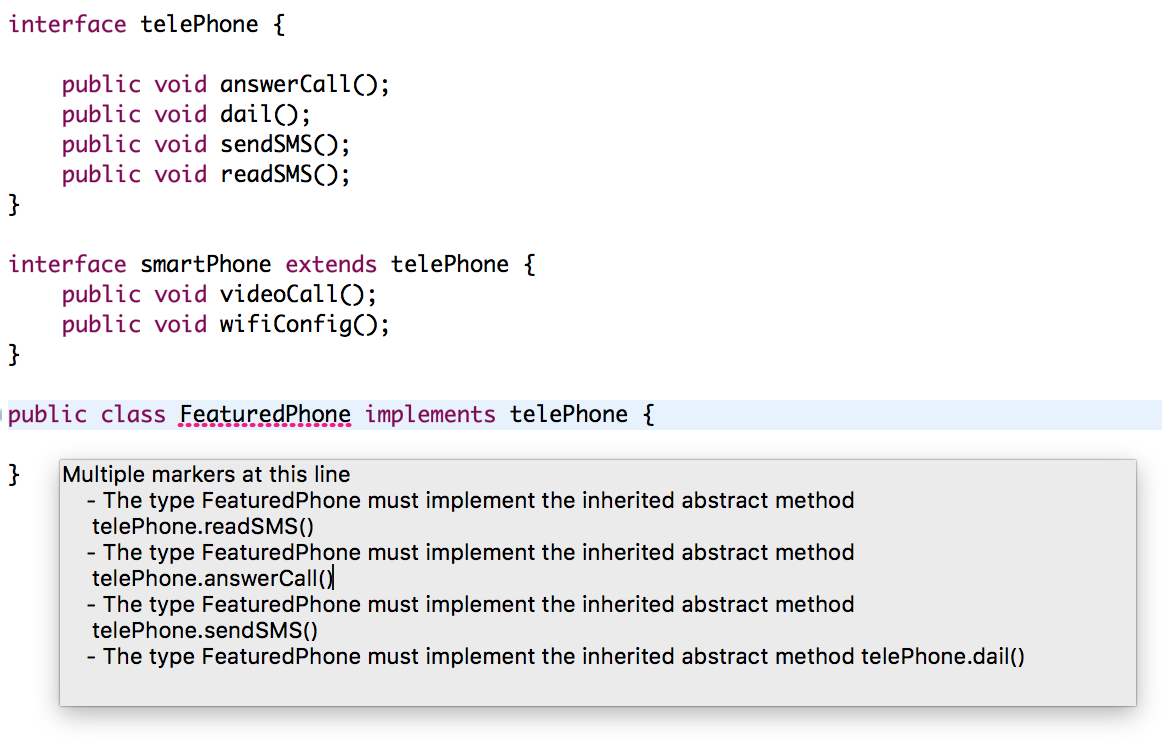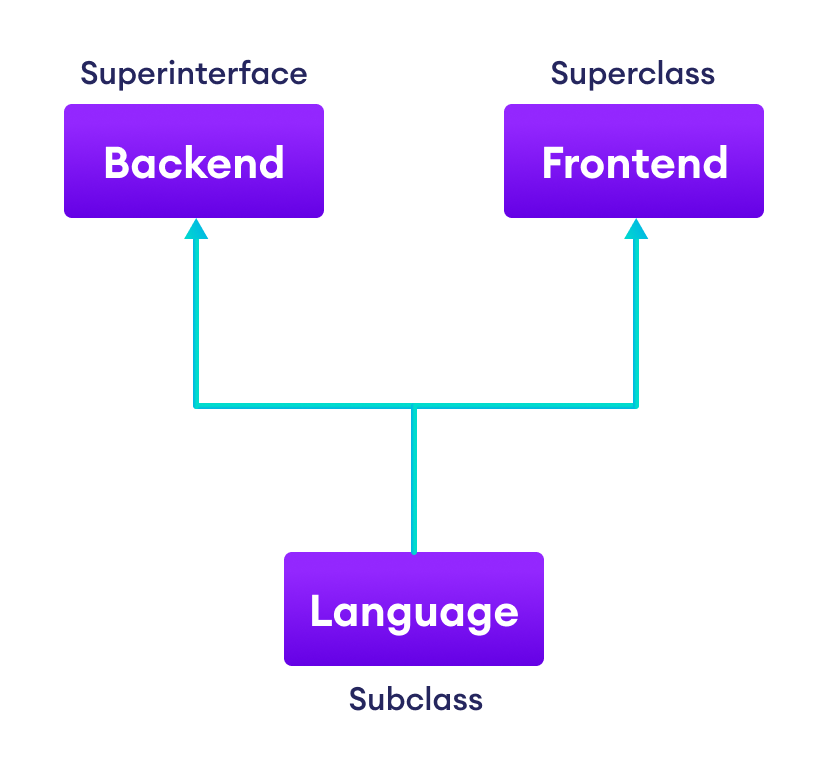

- #Java interface multiple extends how to#
- #Java interface multiple extends software#
- #Java interface multiple extends code#
This is how multi-inheritance is achieved in Java. An interface can also extend multiple other interfaces, while a class can only extend a single other class. Interfaces are similar to classes, but they only contain method signatures (no implementations). However, it can be achieved through the use of interfaces that allow a class to implement multiple behaviors. In Java, multi-inheritance is not supported directly.

In many cases, using interfaces and composition can be a better solution for combining functionality from multiple sources.Multi inheritance in Java is the ability of a class to inherit the properties and methods of multiple parent classes. While multiple inheritance-like behaviour can be useful in certain situations, it is important to carefully consider whether it is necessary for your program. This allows a class to inherit properties and methods from multiple parent classes, without the Diamond Problem that can arise with direct multiple inheritance. However, it is possible to achieve multiple inheritance-like behaviour by implementing interfaces that extend multiple classes.

In Java, it is not possible to directly extend multiple classes. If you need to extend multiple third-party classes, implementing interfaces can be a good way to achieve this without creating complex inheritance hierarchies. Another situation where multiple inheritance-like behaviour may be useful is when you are working with third-party libraries that use inheritance extensively. In this case, implementing an interface that extends both classes can be a good solution. For example, if you have two classes that provide different types of functionality, you may want to combine them into a single class that inherits from both. One situation where multiple inheritance-like behavior may be useful is when you need to combine functionality from multiple sources. Therefore, it is important to carefully consider whether multiple inheritance-like behaviour is necessary for your program.
#Java interface multiple extends code#
In fact, many developers argue that multiple inheritance can make code more complex and difficult to maintain. While it is possible to achieve multiple inheritance-like behaviour in Java using interfaces, it is not always necessary or desirable. When to Use Multiple Inheritance-Like Behaviour in Java This allows us to achieve multiple inheritance-like behaviour in Java. The Animal class will contain a method called "eat" that prints "Animal is eating." The Mammal class will extend the Animal class and contain a method called "drinkMilk" that prints "Mammal is drinking milk." The Reptile class will also extend the Animal class and contain a method called "layEggs" that prints "Reptile is laying eggs."Īs we can see, the Platypus class is able to inherit the properties and methods of both the Animal and Mammal classes by implementing the Omnivore interface. Finally, we will create a class called Platypus, which will implement the Omnivore interface. We will then create an interface called Omnivore, which will extend the Animal and Mammal classes. In this example, we will create three classes: Animal, Mammal, and Reptile. Let's take a look at an example to better understand this concept. The implementing class can then implement the interface and inherit the properties and methods of the parent classes. To extend multiple classes in Java, we need to create an interface that contains the properties and methods of the parent classes. It allows a class to achieve multiple inheritance-like behaviour, without the Diamond Problem. By implementing an interface, a class can inherit properties and methods from multiple interfaces. Unlike classes, interfaces cannot be instantiated, but they can be implemented by classes. To avoid this issue, Java allows a class to implement multiple interfaces, which can achieve similar functionality.Īn interface is a collection of abstract methods that define the behaviour of a class. The reason for this is to avoid the Diamond Problem, which occurs when a class inherits from two classes that have a common superclass. Java does not allow a class to extend multiple classes directly.
#Java interface multiple extends how to#
In this article, we will explore how to extend multiple classes in Java and provide example programs with output.

In Java, a class can only extend one parent class at a time, but it is possible to achieve multiple inheritance-like behaviour by using interfaces. One of the key features of Java is inheritance, which allows classes to inherit properties and methods from other classes.
#Java interface multiple extends software#
Java is an object-oriented programming language that allows developers to create complex software systems. Next → ← prev Java Extend Multiple Classes


 0 kommentar(er)
0 kommentar(er)
